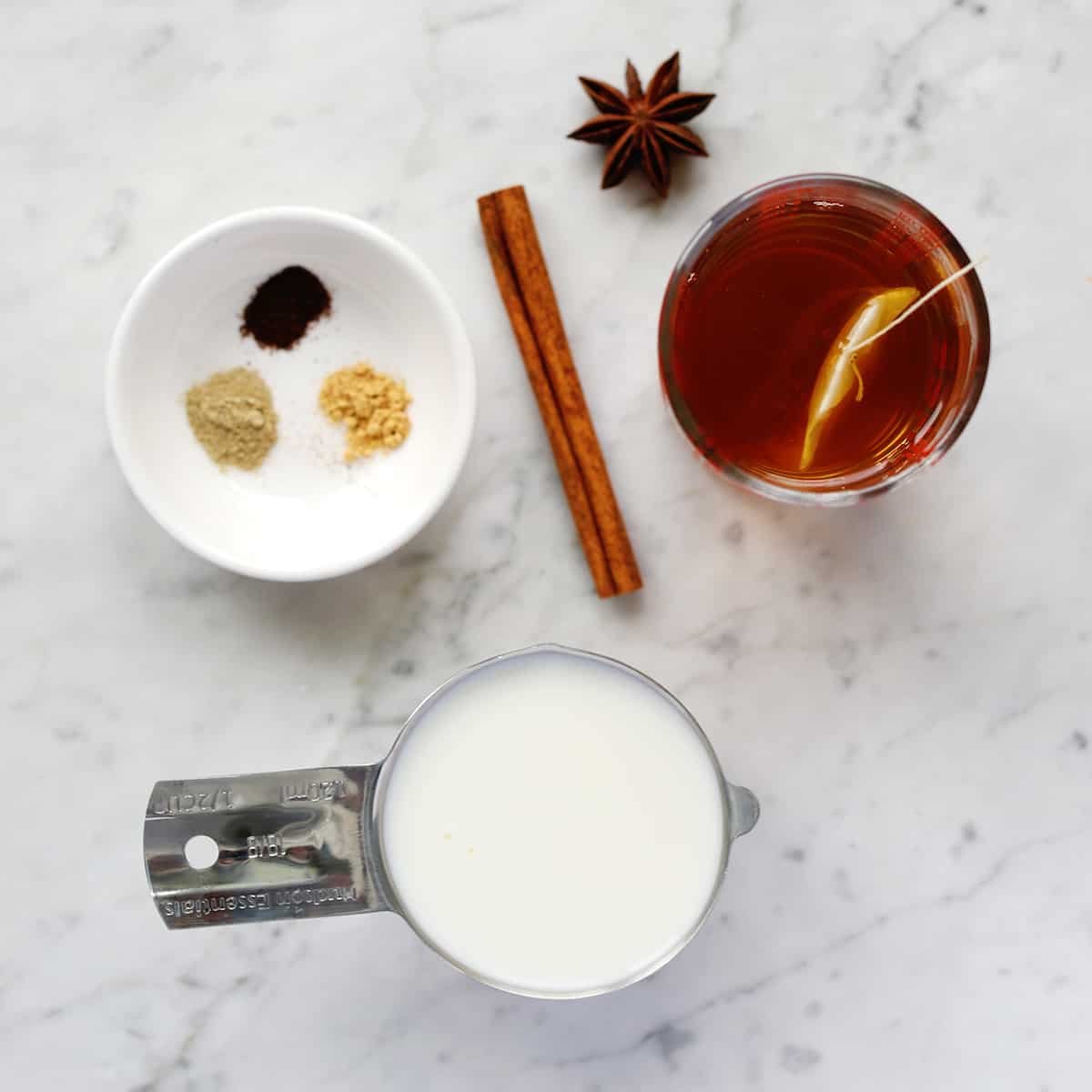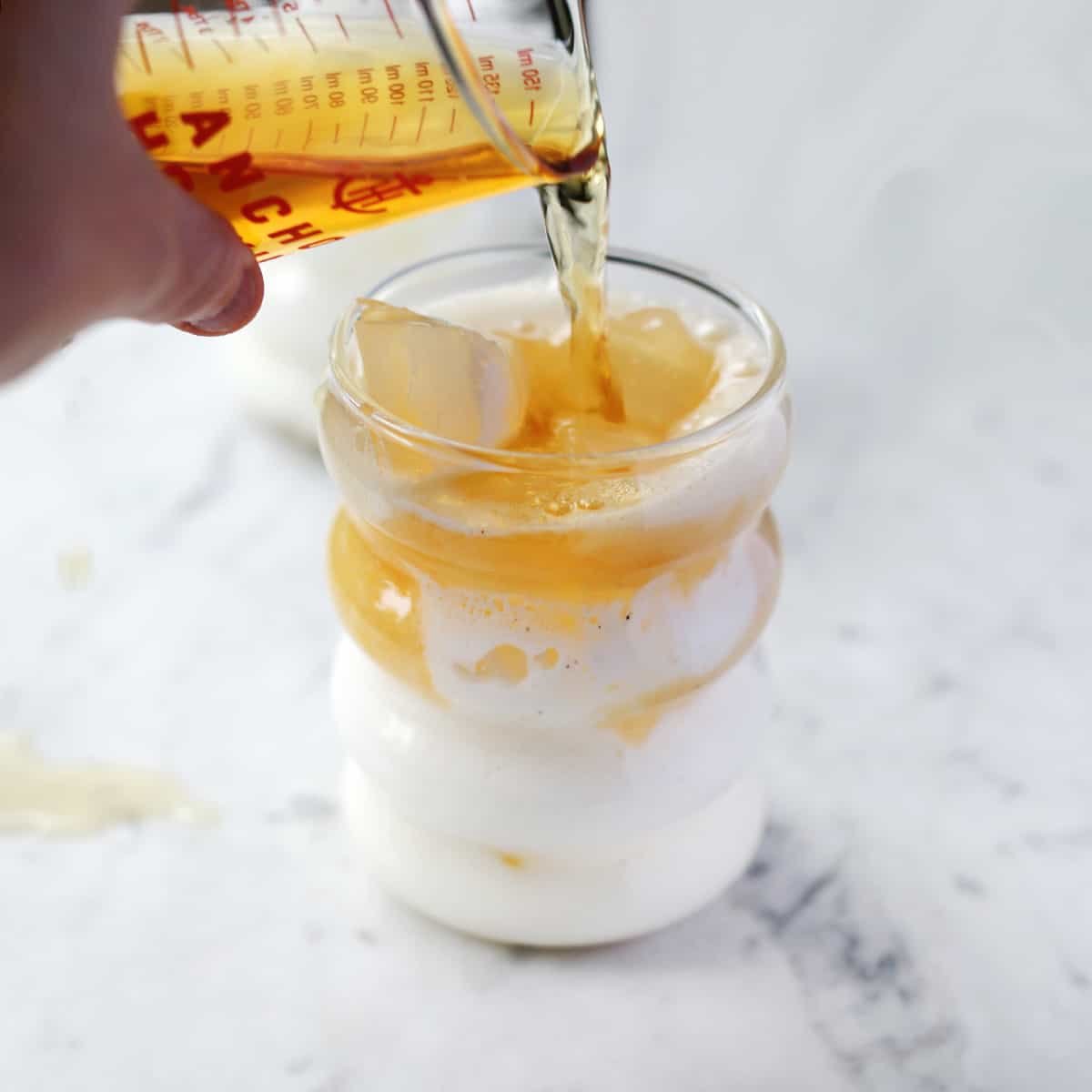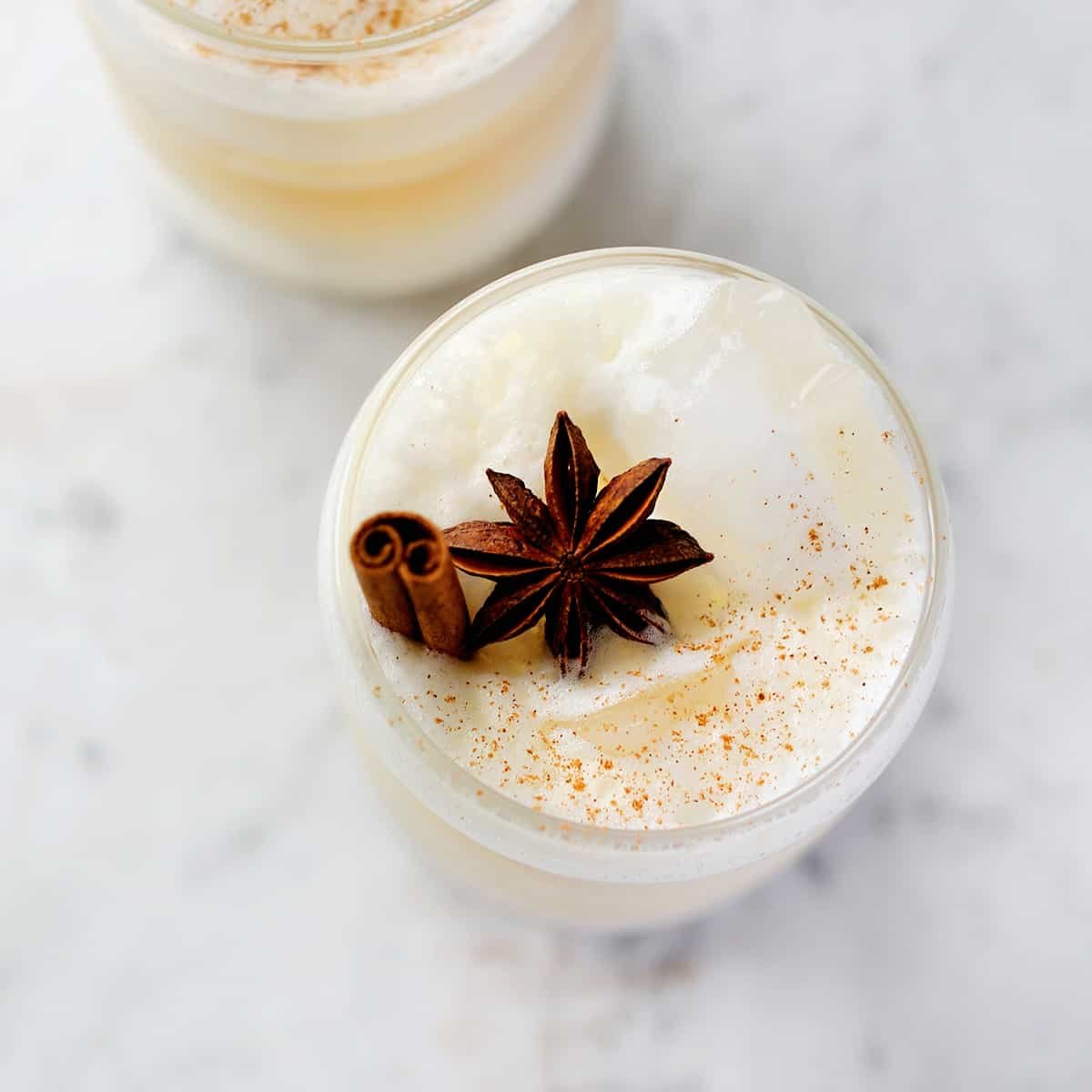I love a chai latte any time of the year. The spices in the tea mixed with the creaminess of the milk are just delicious! And the warm weather has me craving iced chai lattes all the time.
I don’t have the time or budget to go out and get one every time the craving strikes, so I wanted to share how to make the best iced chai latte at home.
What is a Chai Latte? Chai is a black (caffeinated) tea that is infused with spices including cinnamon, cloves, ginger, cardamom, and star anise. Traditional chai tea originates from India.
And while a standard latte is espresso mixed with milk, a chai latte is chai tea mixed with milk, which can be served hot or iced.
Related: If you love a chai latte, try this Frozen Spiced Chai for a special treat!

How to Make Chai Tea
Chai tea is black tea mixed with spices. Often you can find chai tea bags or loose tea that is already combined. If so, you can steep this according to the package directions and allow it to cool to use in this recipe.
If you cannot easily find chai tea bags, you can use this recipe/ratio to make your own: Mix 1 bag of black tea with 1/2 teaspoon cinnamon, 1/4 teaspoon cardamom, 1/8 teaspoon ginger, 1/8 teaspoon cloves, and one star anise.
If you are making more than one serving at a time, or wish to make a single serving with more than one tea bag, simply multiply the spice amounts accordingly. You can also adjust them based on your preferences.
Learn How to Cold Brew Tea for making larger batches of chai.

Sweeteners
Sweeten your iced chai tea latte with 1-2 teaspoons of honey simple syrup per serving. A simple syrup will mix better than honey with iced drinks, as it has a thinner consistency.
More sweetener options include: simple syrup, maple syrup, stevia drops, or you can omit the sweetener altogether if you prefer.

Milk & Milk Alternatives
For a single serving, I usually add 1/2 cup of whole milk. The amount of milk you add to the chai tea is up to you—some may like a more milky latte and some a stronger (less milk) latte.
If you are unsure, follow the recipe card below and see what you think. Then you can adjust the next time you make an iced chai latte.
Any percentage of milk can be used instead of whole, like 2% or skim. You can also choose to use a milk alternative like oat milk, almond milk, or soy milk.

Storage & Tips
- The steeped tea and the honey syrup will keep separately. Steeped black tea can be stored in the refrigerator for at least a week.
- If you like to sip your iced latte slowly, I recommend freezing some of the chai tea into ice cubes so the ice you add doesn’t water down your latte too quickly.
- When serving, sprinkle a little cinnamon over the top or add a cinnamon stick to be fancy.
Other Drink Recipes

Grab this guide to see our Top 25 Recipes of all time!

Free Popular Recipe Guide
Our top 25 recipes of all time!
Get the Recipe
spicy black tea mixed with milk over ice
Instructions
-
Steep the chai tea bag with the water according to the directions.
-
In a small glass, combine the cooled tea, milk, and sweetener.
-
Stir to combine.
-
Fill the glass with ice.
-
Sprinkle the top with cinnamon or add a cinnamon stick (optional).
Notes
- If you cannot find chai tea bags, you can make your own by combining black tea with 1/2 teaspoon cinnamon, 1/4 teaspoon cardamom, 1/8 teaspoon ginger, 1/8 teaspoon cloves, and one star anise.
- If you are making more than one serving at a time, or wish to make a single serving with more than one tea bag, simply multiply the spice amounts accordingly. You can also adjust them based on your preferences.
- Any percentage of milk can be used instead of whole, like 2% or skim. You can also choose to use a milk alternative like oat milk, almond milk, or soy milk.
- If you like to sip your iced latte slowly, I recommend freezing some of the chai tea into ice cubes so the ice you add doesn’t water down your latte too quickly.
Nutrition
Nutrition Facts
Iced Chai Latte
Amount per Serving
% Daily Value*
* Percent Daily Values are based on a 2000 calorie diet.
Notice: Nutrition is auto-calculated, using Spoonacular, for your convenience. Where relevant, we recommend using your own nutrition calculations.


